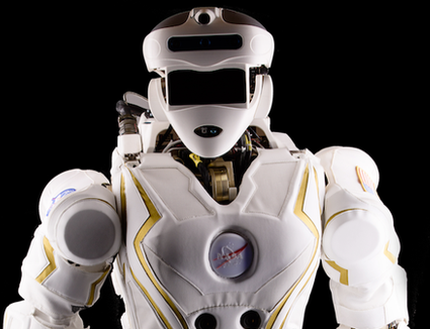Warfare 2050: robots, augmented humans and force fields
An Army-sponsored workshop examined what the battlefield of future decades could look like based on current trends, technologies and trajectories.

Predicting the future isn’t easy, as we’ve seen from how different 1968’s “2001: A Space Odyssey” was from the actual 2001 (Keir Dullea interacted with HAL 9000, we interacted with Clippy the Microsoft paper clip) and 2015 differs from the way it was depicted in 1989’s “Back to the Future Part II,” although that film did get more than a few things right.
But for the military, projecting what the battlefield of the future will look like is a key part of its planning, and a spring workshop sponsored by the Army Research Lab, with participants from the military, media, academia and industry, looked forward to what it could be in 2050. Some of the things they foresee in their recently released report: robots, humans with superhero-like powers, extreme precision targeting and even an actual force field.
Rise of the robots
One consensus from the report is that robot-human interaction will continue to increase. Even in technologies being developed today, such as a “sentient data” solution that will allow soldiers to transmit data to other soldiers and electronic systems without conscious thought through an implant, this idea of a “man-machine partnership” is prevalent.
“An associated major aspect of this battlefield development will be the seamless integration of human and machine decision making,” the report states. “As a result, battle rhythm will increase to the point that, in many instances, humans will no longer be able to be ‘in the loop,’ but will instead need to operate ‘on the loop’.” The difference between the two is that human decisions are required for certain tasks, allowing for humans to exercise positive control when “in the loop.” Conversely, humans “on the loop” can merely watch what’s going on and can act either in anticipation of automated decisions or after such decisions have been made.
While the report notes that robots will perform more battlefield tasks in order to keep humans out of harm’s way – just as unmanned aircraft currently do – the humans who are on the battlefield will have augmented abilities, to the point of seeming superhuman. Humans will be “physically and mentally augmented with enhanced capabilities that improve their ability to sense their environment, make sense of their environment and interact with one another,” according to the report.
Fine-tuned targeting
Another prediction is micro-targeting, which will take precision strikes to new levels, the report states. “For example, instead of being able to identify and engage a particular building or moving vehicle while minimizing collateral damage, the concept of micro-targeting involves the identification and surgical engagement of specific individuals employing either kinetic or non-kinetic means.”
According to workshop participants, this trend is likely given the ability to fuse data from a variety of sources. One example could be the Air Force Research Lab’s CATALiST program, a software uses a semantic wiki intelligence solution for more accurate targeting by providing commanders with a variety of options.
Unlike a typical wikis, such as Wikipedia, a semantic wiki understands data collected in a particular set and determines how pages are constructed on the fly, Mike Gilger, director Intelligence & Software Solutions for CATALiST contractor Modus Operandi, told Defense Systems. “So then instead of your data aging over time, and becoming worthless, you’re always looking at the greatest, latest data that exists within your knowledge store that is continuously updated, either via the wiki or through other automated systems,” he said.
Programs like CATALiST provide commanders with full-spectrum targeting, offering “the least expensive option to perform the greatest value,” Gilger said. Commanders can “determine the best way to apply all the resources we have to bear, whether it’s a cyber attack, whether it’s an EMP pulse to just go ahead and temporarily take down some electrical systems, potentially even cutting the electrical line that will go and take out these radars.” Having those options could limit the damage to surrounding civilian populations during an attack, or during hostage rescue missions, for example.
Machine-to-machine
Along with working more closely with humans, robots are likely to team up with each other, the report notes, albeit without going into much detail. Military researchers have already begun developing and requesting similar solutions such as the Defense Advanced Research Projects Agency’s Collaborative Operations in Denied Environment (CODE) program, which seeks to make improvements in collaborative autonomy among unmanned systems. DARPA wants to enable UAVs to “to find, track, identify and engage targets, all under the command of a single human mission supervisor,” DARPA program manager Jean-Charles Ledé stated. The Navy also has developed “swarming” technology for autonomous and semiautonomous boats and small UAVs.
Lasers and force fields
The military already is pursuing the development of lasers and other directed energy weapons. But another “Star Trek” idea also could take hold, as the workshop participants said that force fields will become a critical aspect of defense, particularly as defense against directed energy weapons. Directed energy weapons, workshop participants noted, include “high power micro and millimeter wave, and lasers of various kinds (solid-state, chemical, fiber), both airborne and ground.” These technologies have experienced significant setbacks since inception dating back to the 1960s, however, but they have begun to demonstrate promise.
patented a force field concept



